the polly singh article ! stupid me !vsunder wrote:Rahul pl. read the article on our very own site on Gp. Capt. Suranjan Das. Your question is answered there!Rahul M wrote:BTW, what is the story behind the "24" in HF-24 ?
thanks sir.
the polly singh article ! stupid me !vsunder wrote:Rahul pl. read the article on our very own site on Gp. Capt. Suranjan Das. Your question is answered there!Rahul M wrote:BTW, what is the story behind the "24" in HF-24 ?
That's not what that means.HariC wrote:does that mean HJT-36/IJT is the 36th design? wow very little water flowed under the bridge since design no. 24
Interesting Vivek; is there any published source - India or pak - claiming the same?vivek_ahuja wrote: it was supposed to have been a covert flight but a Pakistani mole at IAF HQ gave away the flight details to the PAF and they had Sabres waiting to intercept, which of course they did neatly.
The event took place on 10Th April, 1959. The indian aircraft was of course the Canberra from 106 SPR Squadron flown by Squadron Leader J. C. Sen Gupta and Navigator as Flt. Lt. S. N. Rampal.Aditya G wrote:Interesting Vivek; is there any published source - India or pak - claiming the same?

You will have to form your own opinion on the matter here.April 1959 was a red letter day in the history of the Pakistan Air Force. It was the day that the PAF achieved its first ever ‘kill’ in an air engagement. Strangely enough, this happened not in the middle of a war, or even a limited confrontation with an enemy. It happened as a finale to a stealthy incursion into Pakistani airspace by an Indian photo reconnaissance Canberra. Such violations had occurred earlier also but the PAF’s air defence system was still in a state of flux, dependent as it was on WW II vintage radar cover. Besides, the earlier incursions had been only a little way into Pakistan and the intruders invariably managed to slip quickly back into their own airspace before PAF interceptors could close in for an engagement.
But today there was a difference. It was Eid-ul-Fitr a religious holiday to mark the end of Ramadhan month long fasting in Pakistan and the whole nation would be in a mood of festive relaxation. It would be reasonable to assume that even the PAF would have lowered its guard somewhat to accommodate Eid celebration programmes of its personnel. Today the Indian snooper should be able to fly pretty deep into Pakistan and get away with it. Such thoughts must have been the prelude to that day’s IAF photo recce mission. The rest of the story at first hand comes from Flight Lieutenant Yunis of 15 Squadron at Peshawar:
“The air defence alert (ADA) arrangements at Peshawar were spartan - a couple of chairs in the balmy April sunshine in one corner of the alert platform where we sat and chatted and drank tea - it was still too early in the morning to expect our breakfast from the mess. I had been detailed for ADA that Eid day along with two other bachelor pilots - the married officers were ‘spared’ so that they could join the festivities with their families. They would be green with envy at the bachelors before that day was over! I myself nearly missed the excitement to come, when Naseer Butt, who was to be my formation leader, threatened to put me on mobile duty as punishment for being late. But perhaps our common Cranwellian connection persuaded him to relent! I had a total of 450 hours at that time, with about 100 on the Sabre. Boredom had not quite begun to set in when the alarm sounded for a scramble of two Sabres. In no time at all, Naseer and I were off the ground in a maximum rate climb, on a vector of 150 degrees.”
The vector had been given by Pilot Officer Rab Nawaz, the duty air defence controller crouched tensely in front of his radar screen in the operations cabin of 223 Squadron, commanded by Flight Lieutenant S A Rahman. The WW II Type 15 mobile radar unit was deployed at Wegowal, an abandoned airstrip near Sargodha, and was hooked up to a makeshift Sector Operations Centre located at the Tiwana House in Sargodha cantonment. It was from this SOC that the duty operations officers, Flight Lieutenant A M Shahzada, had given Peshawar the order to scramble.
Rab Nawaz was a very junior officer and his job was not made any easier by the absence of a height finding facility. Moreover, the aircraft blips spread across nearly 10 to 15 miles of the range scale on his vintage radar screen. Nevertheless Rab Nawaz persevered and, with intense concentration, eventually succeeded in manoeuvring the Sabres into visual contact with the target, whose contrails no doubt played an important part in this interception. Yunis continues:
“At about 20,000 ft, we spotted a double trail way above and far ahead. Assuming two Hunters, I selected their wingspan on my gunsight. No target was available to our controlling radar but we were vectored on a curve of pursuit. When we were at 41,000 ft, the trails could be identified as a single Canberra flying on a steady northerly heading, clearly oblivious of any threat to it. Overhead Gujrat now, it appeared to be at about 50,000 ft. We punched our tanks and, although we were still out of range, the mounting excitement threatened to get the better of sound judgement.”
The Sabre leader now called for clearance to shoot and, for a moment, Rab Nawaz debated whether to go through the full standard procedure for obtaining permission. But that would very likely cause enough delay to allow the positively identified Canberra to slip away - such a close encounter may not occur again in a long time. He quickly told Shahzada at SOC that he was about to clear the Sabres to shoot - and proceeded to do just that. Yunus goes on:
“We were still not within optimum range but Naseer impatiently launched into a series of energy-climb/burst-of-gunfire/stall out sequence which became more desperate with each repetition. In the meantime, I kept a steady height and heading in order to give rear cover to my leader. It suddenly occurred to me that, if the Canberra spotted us, he would in all probability turn right i.e., towards the border, so I eased over in that direction. The leader had given me the okay to have a go if I could, but I could see I was still too far below the target. Presently, the Canberra did turn right and then, as if he had spotted me, quickly reversed. On that side he must have spotted Butt, for he seemed to panic and tightened his turn, which of course caused him to lose height rapidly. I saw my chance and put a bead on his right engine - just in time I remembered my Hunter wingspan setting and quickly ranged on half the Canberra’s span - immediately I could see my bullets impacting on his right engine. I traversed the bead to the centre, not letting go of the trigger till the guns stopped - due to over-heating, as it turned out. But I had fired 1,200 rounds by then and the doomed Canberra whipped into a spiral.
“I had not seen any ejection but, in fact, both crew were found, relatively unharmed, by a ground party and after the usual interrogation, returned to India. While I headed for base, stunned by the excitement of my experience, Butt watched the Canberra spiral down to its impact point. As I approached Peshawar I was sorely tempted to do a victory roll over the base, and barely resisted the temptation - this may have been providential because two sorties later this aircraft had an aileron-jam malfunction which the pilot overcame only in the nick of time to avoid a crash. Had this jam occurred during my contemplated victory roll, I could have easily wound up being an ‘over confidence’ statistic in a fatal accident inquiry. Eid Mubarak to me, indeed!”
A befitting Eid gift to the Pakistan Air Force, which had drawn first blood!
Flight Lieutenant Yunis was awarded the ‘Sitara-e-Jurat’ the coveted gallantry model of PAF, equivalent of the DSO. He rose to the rank of Air Vice Marshal and retired in June, 1990.
RAW goes on recce mission
6 Jan 2009, 0035 hrs IST, Arun Ram & V Ayyappan, TNN
CHENNAI: A day after the Sri Lankan army took over Kilinochchi, pushing the LTTE fighters to the northern jungles of Mullaittivu, India sent a select team of the Research & Analysis Wing (RAW) on a secret aerial surveillance mission across the Palk Straits.
Sources told TOI that the aircraft belonging to the Air Research Centre (ARC), a top secret wing of RAW, took off from Chennai airport around 3am on Saturday. Sources refused to confirm if the ARC exercise was on the request of the Sri Lankan government.
"The ARC aircraft, which took off from Chennai with high-tech espionage equipment, flew quite close to the Sri Lankan coast and got back to another airport without returning to Chennai," a source said. ARC, which has a fleet of Boeings and Embraers fitted with some of the best cameras for high-altitude photography, can fly well above 40,000 feet.
The vision of the cameras, made on the lines of satellite cameras, can penetrate clouds and get photographs of spatial resolution of less than one metre, which means a small vehicle or even a person on the ground could be photographed from those heights. For civilian flights, there are internationally accepted preset codes. The ARC aircraft uses codes and call signs other than these and keeps changing them before every exercise.
The exercises are so secretive that ARC uses its own pilots and not even those from the Indian Air Force. While it uses civilian and IAF airports across the country, there is no fixed air base for ARC, which remains more of a dynamic arrangement than an organisation. "There was little notice for Saturday's mission. The flight came from some other airfield and took off in the early hours," an airport source said.
was the mole ever caught/identified ?also because it showed how high some pakistani moles were in IAF HQ.
The 1965 India-Pakistan War
IAF’s ground reality
In more ways than one, the 1965 India-Pakistan War was a watershed for the Indian Air Force. Air Commodore Jasjit Singh (retd) looks at the many dimensions of this conflict. Exclusive extracts from his new book
The Indo-Pakistan War of 1965 was the first time in the history of Independent India when our military power was confronted by a hostile air force at a time when Pakistan had launched a surprise invasion into India and, hence, also achieved substantive strategic and tactical surprise.
And, for the first time in its history, the Indian Air Force (IAF) had to contest command of the air against a highly trained Pakistan Air Force (PAF) equipped with aircraft and weapons systems technologically far superior to those of the IAF, courtesy the United States.
The war also created perceptions and misunderstandings about what was done, not done, and should have been done. In particular, it vitiated the relations between the army and the air force well beyond the traditional professional and not-so professional differences that have been experienced among armies and air forces across the world for a century.
Mi-17 utility helicopter
Four decades after the war, what we need to address is a couple of critical issues which provide us both an insight into the mythologies built up about the 1965 War as well as some of the major misreading and/or misunderstandings of the type that led a former air chief to come out with his memories of what he believed was the failure of the IAF.
First is the issue of the performance of the IAF in the air war with the PAF. Most of the generous interpretations have been to view the war as a draw – an absence of decisive outcome. For example, the official history of the war produced by the History Division of the Ministry of Defence, Government of India, also concluded, "Taking an overall view of the air war, it appears clear that neither side won any decisive victory. The IAF and PAF mauled each other, but could not kill."
There are three aspects of the performance of the IAF that we need to note. The first is that of air-to-air combat and warfare; the second relates to the air-to- ground mission and its effects; and the third is the issue of whether the IAF had a clear doctrine and strategy for the war, whether this was coherent, and whether it achieved the desired results.
Three important and often ignored contextual facts need to be noted in any analysis of the 1965 War. First, the Indian Air Force was restrained by the government from retaliating to the PAF attacks in the eastern sector while a substantive part of its combat force was deployed there and could not be transferred to the western sector. Second, international (UN) stipulations and norms did not permit military force to be introduced into the Indian state of J&K beyond what was agreed during the
1949 ceasefire. But was the greatest handicap that the IAF faced was the government’s decision to stop all operations against East Pakistan after Pakistan hit our airfields in the eastern sector and destroyed a significant number of aircraft after the war had broken out in the west.
Air warfare
Latest front-line multi-role combat aircraft, the Sukhoi Su-30
One of the major reasons that have led to the belief that Pakistan "won" the air war is that people have focussed almost exclusively on the aircraft lost. And we lost an inordinately large number of aircraft on the ground to PAF Attrition is a good indicator of relative success; but the inexcusable error that almost everyone made, and has continued to make – including our official historians (in spite of having senior officers of the IAF available to advise them on technical/professional issues) – follows the Pakistani emphasis on number crunching which tended to show them in better light, especially in view of the significant number of aircraft we lost on the ground. In air warfare, attrition must be measured in relation to the air effort and not just to the number of aircraft held in the inventory.
Pakistan doing so is understandable since the larger number of Indian losses conveys an impression that the Indian Air Force lost out to their air force. Unfortunately, the official history produced by the Indian Ministry of Defence also does exactly that: relying heavily on Pakistani literature, especially John Fricker, and less on our own.
If we take the best data available from all possible known sources, we find that the PAF flew a total 2,364 sorties, according to its official history during the 1965 War.21 Indian official estimates place the total aircraft losses of the PAF at 43 aircraft. This would amount to the PAF having suffered an attrition rate of 1.8189 aircraft lost per hundred sorties flown during the war, that is, an attrition rate of 1.82 per cent.
Mirage 2000s flanked by the Sukhois
The IAF, on the other hand, flew 3,937 sorties in the western sector alone and lost a total of 59 aircraft both in the air and on the ground during the war, in the western and eastern sectors combined.22 Its attrition rate works out to 1.4986 aircraft lost for 100 sorties flown. In other words, the Indian Air Force suffered an attrition rate of 1.50 per cent compared to Pakistan’s 1. 82 per cent.
One can hypothesise that the difference is not so marked that we can draw an unambiguous conclusion about the winner and the loser. But considering that the IAF was clearly the bigger air force, though not possessing a 4:1 ratio, as the Pakistanis make it out to be, the PAF experiencing a 21.3 per cent higher attrition rate than that of the IAF clearly makes a mockery of any claims of the PAF having achieved air superiority or of having defeated the IAF.
If we set aside aircraft lost on the ground due to enemy action, we find that India lost a total of 24 aircraft to air action and ground fire. Measured against the 3,937 sorties flown in the western sector, this amounts to a loss rate of 0.6096 aircraft per hundred sorties flown in the war.
Compared to this, the Pakistan Air Force lost 43 aircraft. It admitted to the loss of only one F-86 on the ground to IAF action (at Sargodha). Taking this at face value, against a total of 2,364 sorties flown in the war, the Pakistan Air Force loss rate in air warfare would amount to 1.7766 aircraft for every hundred sorties flown. In other words, the PAF was losing aircraft at nearly three times the rate of the IAF during the war. Other estimates conclude that Pakistan lost close to half a dozen aircraft on the ground on account of IAF air action. In this case, the loss of 37 aircraft in air warfare would amount to a loss rate of 1.5651 aircraft for every hundred sorties flown in the war.
In other words, taking the lower figure for PAF losses in the air, Pakistan was losing 1.57 aircraft for very hundred sorties flown, compared to the IAF losing 0.61 aircraft. Given its overall smaller size, the PAF would have ceased to act as an operational force if the war had gone on for another two weeks or so.
Support to the Army
No other single issue has vitiated the atmosphere of army-air force relations more than the perceived conduct of the 1965 War. It is curious indeed that there was virtually no criticism about the absence of combat air force in the 1962 Sino-Indian War which was not even permitted by the political leadership, especially by the defence minister.
Unfortunately, no data on the air effort devoted to the Chhamb-Jaurian sector in particular and J&K in general, was kept. In fact, the official history does not clearly tell us the quantum of close air support and interdiction carried out by the IAF. But more specifically, the Pakistan Army was virtually stopped in its tracks and "the IAF prevented a major Pakistani breakthrough."
The only explanation that fits the facts is that the IAF had imposed a heavy attrition on Pakistani armour even against the setting sun, and it would have been suicidal for it to proceed further. Akhnur was saved and so was a crucial military-logistics key point on the lines of communications into J&K. This is borne out by circumstantial evidence. But what became the real source of lament about air support was the Indian counter-offensive on September 6, 1965, into Pakistan.
The Indian Army’s 15 Division was launched on the offensive at daylight, along a major highway, without informing the air force! The army commander has been scathing in his criticism of the divisional commander on this count and for not providing the command leadership required. Our division exposed itself to enemy air strikes while the IAF practically knew nothing of the advance and continued carrying out extensive close air support and battlefield interdiction on the other axis of advance to the north and south of the 15 Division thrust.
Given the doctrinal tensions in the IAF from the time of its creation, it is interesting to look closely at how air operations were actually carried out during the 1965 War.
The first set of questions that arises is: did the air force play a strategic role? And what was the extent of its tactical role and its effects? To the extent that there is sufficient evidence that Pakistan virtually abandoned Grand Slam and its objective of capturing Akhnur due, in a large measure, to the late evening air strikes of September 1, 1965, or at least slowed it down sufficiently to allow adequate defences to be created by otherwise outnumbered forces who fought so gallantly, the Indian Air Force achieved a strategic impact on the course of the war.
The IAF concentrated substantively on interdiction during the war. This has been viewed by many as doctrinally incoherent. Historically, interdiction is of two types: supply interdiction and mobility interdiction. And interdiction provides the greatest payoffs when the two combine. The Indian Army’s strategy forced it to move troops to the Sialkot and Kasur sectors. The toll of its rolling stock taken by the IAF, especially the dramatic strike on the train carrying ammunition, added to the supply woes of Pakistan. In fact, shortage of ammunition was one of the over-riding factors that led to Ayub’s decision to accept a ceasefire. Our intelligence failed to make a correct assessment of Pakistan’s capability to continue the war and avoid a total collapse which actually was imminent.
If we set aside the fiction and myths that have grown, flowing from ill-informed self-criticism, on one side, and the high profile Pakistani self-promotion as the winner of 1965 (on the ground and in the air), on the other, the reality is that the IAF acquitted itself extremely well in spite of local mistakes. Where we failed the most, however, was in not having sorted out our doctrinal contradictions, our organisation for close air support (especially the communications) and infirmities of higher defence organisational deficiencies which had not been fully rectified even after 1962.
Excerpted with permission from
Defence From the Skies: Indian Air Force through 75 years
by Air Commodore Jasjit Singh (retd).
Published by Knowledge World in association with Centre for Air Power Studies.
Pages 280. Rs 2300
Enjoy maadi!Welcome
The Flightglobal Archive invites you to explore 100 years of aviation history as it appeared in the original pages of Flight Magazine from 1909-2005.
Every issue of Flight Magazine published between 1909-2005, digitally scanned and fully searchable
Thumbnail browser interface allowing for rapid issue viewing
Save and print your favourite articles
Topic pages, plus unique archive photo and cutaway galleries
100% FREE ACCESS – forever. In fact we’re positively encouraging you to link to, copy and paste from, and contribute to the development of this unique record of aerospace and aviation history
The pakis won a "Hezbollah victory" in 1965. As in "everyone is dead, but the IAF could not manage to kill my goats Ayesha and Kushboo so I win" victory.HariC wrote:http://www.tribuneindia.com/2007/200705 ... /main1.htm
The 1965 India-Pakistan War
IAF’s ground reality
I don't know whether this info is true or false because Pakis have the habit of lying and will claim killing an elephant by killing a rat!"Saiful Azam became the first Pakistani pilot to score against the Israeli Air Force in the 1967 Arab-Israel war. He shot down a Vatour Bomber, a super Mystere, and a Mirage IIIC, all in only two missions thus raising his tally to four kills. To-date he remains the highest shooter of Israeli aircraft.
He has been highly decorated with gallantry awards by both Jordan and Iraq for his extraordinary display of skill and courage."
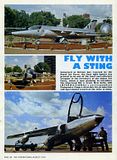
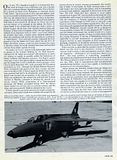
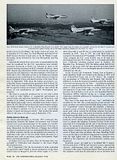
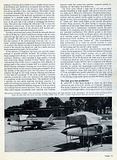
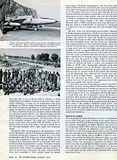
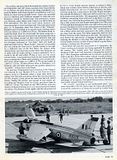
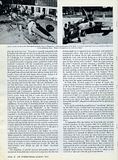
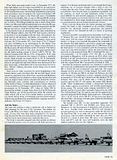
Indian Air Force and its Transport Fleet
By Air Marshal Ashok Goel (Retd) Published : October 2008
New Delhi. The Indian Air Force was officially established on 8 October 1932, that being the date of its formal constitution. The first aircraft flight however was not formed until 1 April 1933, at which time it possessed a strength of six officers trained at RAF Cranwell and 19 “Hawai Sepoys” (literally air soldiers), and an inventory of four Westland Wapiti II-A aircraft.
The year 1946 saw the establishment of the first RIAF transport unit, No. 12 squadron (initially a Spitfire squadron in 1945). It received Dakotas in Panagarh by late 1946. In January 1950, India became a Republic and the IAF dropped its prefix “Royal”.
At this time India possessed six fighter squadrons, one bomber and one C-47 Dakota transport squadron. In addition, IAF had one AOP flight, Communication squadron and training organization.
A second transport squadron, No. 11, had been formed on C-47 Dakotas in September 1951.
Eighty C-119G Fairchild Packet aircraft were inducted during the period 1954 to early 1963 under US emergency military assistance.
These propeller driven twin engine piston aircraft served the IAF with distinction till Jul 1985, for more than 30 years. It was a most beautifully crafted military transport aircraft of its time. The cockpit, the delivery system, loading facilities, all were immaculate and the machine was a pilot and crews delight.
As an un-pressurized aircraft, it was designed to fly below 18000 feet. However, the Indian Air Force added a jet pack -Gnat’s Orpheus J-34 engine – on the top of its fuselage to take it up to 24000 feet to drop supplies to troops facing Chinese incursions.
It would have been impossible to operate in the thin air otherwise. The Indian innovation was copied by the CIA for its Latin American operations, not necessarily for heights but for fast takeoff after dropping supplies.
This magnificent Packets operated regularly to Leh, Thoise, Kargil and Fukche. All the airfields were beyond 3200 meters (11000 feet) elevation. Not only that, the IAF created history by landing it at Daulat Beg Oldi (DBO), an airstrip located beyond 16000 feet elevation. The sixties revealed a serious security concern for India.
Frequent clashes with china and finally an unprovoked attack on India’s sovereignty in October 1962 necessitated quick and timely buildup of the air force. Till then, the political mindset was not even in favour of buying jeeps for the Indian Army.
Transport aircraft and logistics became a hallmark for the Indian Air Force due to the Indian debacle in the face of Chinese aggression.
Soviet built An-12 and IL-14 were inducted during the period March 1961 to July 1963. Two new operational squadrons were formed, namely No. 44 and No. 25, and based at Chandigarh.
The An-12 aircraft also had its limitations. It was partially pressurized (only the crew cabin and the Kabina with 14 passenger capacity). Nonetheless, in spite of its another, and serious, limitation in navigational aids, it played a remarkable role in Air Transport, Air maintenance and Maritime Reconnaissance roles.
(No. 44 Squadron)The most remarkable achievement of the An -12 fleet was its modification to a “Bombing Role” just before the 1971 Bangladesh War.
The Indian Army had expected a massive attack from Pakistan on the western borders, and indeed, at one time, the Pakistani Army concentrated some 30,000 troops around Kashmir to capture it. Sure enough, this happened, and IAF saved the day by deploying the modified An-12s to bomb Pakistani positions and troop concentrations.
Aircraft of the No. 44 Squadron flew night missions, unescorted, and did intense carpet bombing, rolling out nine tones of fire from each aircraft. They were always in waves of six aircraft, and fortunately, all returned home safely and smilingly.
The Squadron won one MVC (Maha Vir Chakra) and three VrCs (Vir Chakra).
It may be noted that night fighting capability was virtually zero with the air forces of both the countries, and the Pakistani Air Force (PAF) was unable to intercept even a single An-12.
The aircraft was deployed on both the Western and Eastern sectors, and played a crucial role in turning the fate of the War in India’s favour.
In fact, the Russians were amazed to know this role of their An-12 aircraft, and praised the IAF profusely for its innovative spirit. This magnificent and majestic flying machine went out of the Indian skies during July 1993.
IAF’s peacetime role has been “Air Maintenance” of Indian troops in the western sector and maintaining troops and civilians population in the Eastern sector in a big way.
This requirement by itself has necessitated deployment of four squadrons in the western sector and nearly four squadrons in the Eastern sector. The Dakota and the Packet fleets, which were the backbones of the transport fleet, had outlived their technical life.
Their maintenance support had become a nightmare. In the mid-seventies however, the IAF’s transport fleet had shown signs of a dwindling force.
We delayed in identification and induction of replacements by seven years (since the mid-seventies). By this time the An–12 fleet was also showing signs of fatigue and inadequate maintenance support.
It was only during the early 1980s that a final decisions was taken to completely replace the ageing Dakota and Packet fleets with An–32 aircraft.
The Soviets had offered modified An–26, with high-powered engines, for high attitude operations. It would be interesting to know that 118 An–32 aircraft were contracted on a 20 years military credit arrangement, with no interest liability. Today, perhaps one modern transport aircraft equals them in cost.
I still remember the words of then Joint Secretary (Air) in the Ministry of Defence, Mr Desai, who said in a meeting: “Sign as many aircraft you want, for after few years even a car may cost more than them.”
How true!
By this time the replacement for An–12s was considered, the Soviet IL–76 MD was found to be the most suitable aircraft.
It could carry 48 tonnes of payload, or one T-72 tank weighing 42 tonnes comfortably.
Its four engines gave the aircraft some multipurpose capability, including operating at unpaved surface. It was an aircraft that could operate without any ground support system, and most reliably. It was suitable for quick induction of troops in battle zones or disturbed area. A full complement of 225 troops could be landed and deployed in a matter of three minutes with no hassles.
The induction of An–32 during the early 1984 and IL-76 MD aircraft during 1985 added a new dimension to air power in the Indian subcontinent.
IAF deployed the IL-76s effectively, taking over the control of Air maintenance role and air transport operations within three to six months of their induction. These aircraft gave a tremendous boost to the IAF. And strategic reach.
In another first, the IAF landed an IL-76 MD at Leh on 14 October 1985, and then again at Thoise on 30 January 1987, on a short runway of about 5500 feet. The manufacturer’s specifications warranted a runway length of mnimum 7,500 feet.*
In fact, the Indian Air Force has a record of operating various machines well beyond their limitations, and in the most difficult and inhospitable terrains, whether it is combat or transport aircraft, or even helicopters.
Ferries to Siachen are an example. During Operation Brasstacks, an exercise to test war games, one IAF pilot conducted a record 28 missions in seven days by the Il-76s to land BMPs in the tough and high mountainous terrain.*
The first testing ground for India’s new resurgence in strategic reach was evident in the Sri Lanka operations. First, during June 1987 when six An-32 aircraft carried out food supply drops to display their solidarity for the suffering of Tamils in the Jaffna peninsula.
From 29 July 1987 onwards, once the Sri Lanka accord was signed by the then Prime Minister Rajiv Gandhi, there was a massive induction of the Indian Peace Keeping Force (IPKF) from 30 July itself. The IAF transporters provided unhindered and massive support during the operations till 1990.
Alongside the IPKF operations, there was a sudden call from one of our smaller but important neighbour, Maldives. There was an SOS from President Maumoon Abdul Gayoom who faced a Coup D’etat on 3 Nov 1988.
The Indian government consulted world powers and some Islamic friends, and then rushed troops to save the beleagured government.
This could be done due to the strategic reach that the IL-76 aircraft gave the Indian Air Force. Five Il-76 and 30 An-32 aircraft were pressed into service within houurs of his distress call to land Indian troops on this nation of 1000 islands and the government was saved.*
It may be noted though that the last time we last inducted transport aircraft was 25 years back. Both the An–32 and IL–76 MD aircraft have completed their calendar life as per the Soviet manufacturer’s specifications. Both are on their extended lives, and could go on for another 10 to 15 years.
It is time to put on our thinking caps to look for replacements.
Ideally, we should have developed our own transport aircraft, but the MTA venture with Russia for nearly 50 aircraft should do well. We have already placed order for six Hercules C 130J special operations aircraft from the US Lockheed Martin, but that is too small a number for the size of Indian Air Force. Perhaps, we will exercise the option for another six.
The Chief of Air Staff, Air Chief Marshal F H Major, has made a welcome announcement about the induction of Very Heavy Transport Aircraft of &0-plus tones capacity. Whatever aircraft we buy, the time is of essence now as the existing aircraft are ageing, and their replacements must come as soon as possible.
Thankfully, after years of paralysis at the Ministry of Defence after 1990, the system is well geared now, and the government is adequately taking care of the equipment requirements for the forces. The vagaries of politics, as to who should come to power, should have no impact on the normal replacement and augmentation process.
The lack of munitions during the Kargil War for instance, when mortar shells had to be acquired at a week’s notice to shell the positions occupied by intruding Pakistanis, should be a warning.
Like the Indian Army and Navy, the IAF has to keep up with the pace of the time and timely identification and induction of replacements has to be done. The Ministry of Defence has to support this effort always.
Ajit:Ajit.C wrote:Any Idea what happened to the Flight Leader A S Ghumman? It would be interesting to hear his side of the story.
The An-32s were procured at unit cost of Rs 3.2 crores apiece (1980s money as per CAG). Compare to Some of our fightersIt would be interesting to know that 118 An–32 aircraft were contracted on a 20 years military credit arrangement, with no interest liability. Today, perhaps one modern transport aircraft equals them in cost.
great idea aditya, how do you want to work this?Aditya G wrote:Mysterious operations of the 110 HU in North East:
- Op Jim Jam
- Op Suraj
- Op Malar
- Op Rajat
- Op Golden Bird (Joint op with Burma)
- Op Vajra
- Op Ashok
- Op Tiger Leech
I think BR requires a "Operations & Exercise database" on lines of Officers database, attrition database etc - this will be very useful for any researcher. (Jagan - I volunteer for such a project for BR)
This clearly showed that India was on a path of innovation. Western countries cut India out of the path and isolated India after 1960s and made sure that India never had any partners in the development of modern arms.